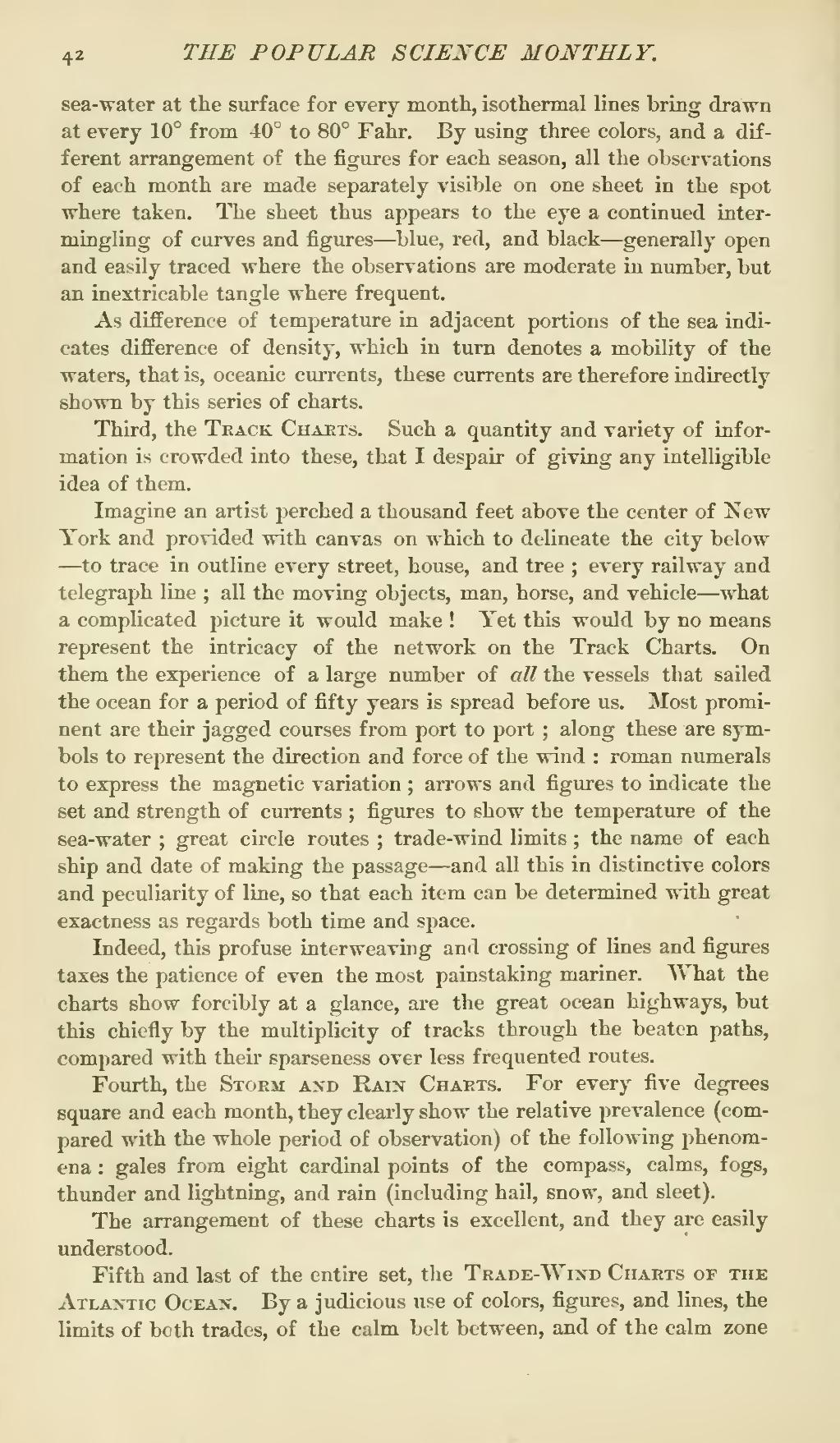sea-water at the surface for every month, isothermal lines bring drawn at every 10° from 40° to 80° Fahr, By using three colors, and a different arrangement of the figures for each season, all the observations of each month are made separately visible on one sheet in the spot where taken. The sheet thus appears to the eye a continued intermingling of curves and figures—blue, red, and black—generally open and easily traced where the observations are moderate in number, but an inextricable tangle where frequent.
As difference of temperature in adjacent portions of the sea indicates difference of density, which in turn denotes a mobility of the waters, that is, oceanic currents, these currents are therefore indirectly shown by this series of charts.
Third, the Track Charts. Such a quantity and variety of information is crowded into these, that I despair of giving any intelligible idea of them.
Imagine an artist perched a thousand feet above the center of New York and provided with canvas on which to delineate the city below—to trace in outline every street, house, and tree; every railway and telegraph line; all the moving objects, man, horse, and vehicle—what a complicated picture it would make! Yet this would by no means represent the intricacy of the network on the Track Charts. On them the experience of a large number of all the vessels that sailed the ocean for a period of fifty years is spread before us. Most prominent are their jagged courses from port to port; along these are symbols to represent the direction and force of the wind: roman numerals to express the magnetic variation; arrows and figures to indicate the set and strength of currents; figures to show the temperature of the sea-water; great circle routes; trade-wind limits; the name of each ship and date of making the passage—and all this in distinctive colors and peculiarity of line, so that each item can be determined with great exactness as regards both time and space.
Indeed, this profuse interweaving and crossing of lines and figures taxes the patience of even the most painstaking mariner. What the charts show forcibly at a glance, are the great ocean highways, but this chiefly by the multiplicity of tracks through the beaten paths, compared with their sparseness over less frequented routes.
Fourth, the Storm and Rain Charts. For every five degrees square and each month, they clearly show the relative prevalence (compared with the whole period of observation) of the following phenomena: gales from eight cardinal points of the compass, calms, fogs, thunder and lightning, and rain (including hail, snow, and sleet).
The arrangement of these charts is excellent, and they are easily understood.
Fifth and last of the entire set, the Trade-Wind Charts of the Atlantic Ocean. By a judicious use of colors, figures, and lines, the limits of both trades, of the calm belt between, and of the calm zone
